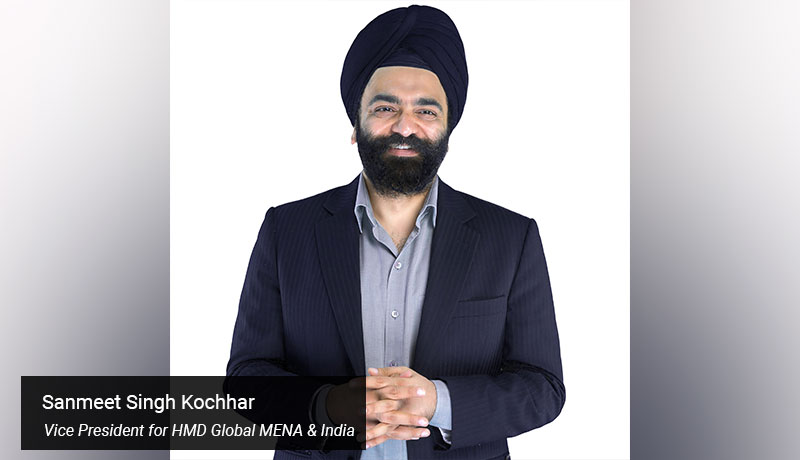
By Sanmeet Singh Kochhar, Vice President for HMD Global MENA & India
Despite the disruption caused by COVID-19, the International Data Corporation (IDC) expects the smartphone market to rebound to a full recovery by 2022. In fact, The GSMA Report for the Middle East anticipates there will be 60 million mobile 5G connections in MENA region by 2025.
Across the GCC, 5G networks are now being rolled out – Saudi Arabia and the UAE already boast of some of fastest 5G speeds in the world. Smartphone manufacturers launched 5G models last year, and 5G phones will continue to be an important part of their product portfolios.
The ongoing 5G revolution will continue to transform not just the smartphone industry, but the media and entertainment landscape as well in tandem. With connectivity that can be 10 to 20 times faster than those of currently available 4G networks and low latency that ensures almost no lag while playing, 5G will make growing sectors such as e-sports widely accessible and catalyze another phase of explosive growth. Low latency and video streaming will grow even further as content will be high quality and more immersive.
The COVID-19 pandemic served to accelerate digital connectivity in the GCC. It is now more important than ever to break down the barriers to mobile internet adoption and usage across the region. Digitalization after all, is going to be an important building block of economic diversification for the GCC economies.

From AI to robotics, technological innovation is shaping our future. In the smartphone industry, we are looking at innovation in both software and hardware. But this goes beyond cool features that simply have entertainment value.
Remote work and distance learning will be catalysed by the rapid evolution of new technologies such as Artificial Intelligence and Augmented Reality. As these technologies become more prevalent, consumers will expect to have these technologies in the palm of their hands through their smartphones. From AI screen recognition to machine-learning smartphones will become a smarter companion to its users as they gain a deeper understanding of people’s preferences and usage habits to create a seamless experience.
However, as technology advances and devices are more connected than ever, they are also more vulnerable to cyberattacks. People are relying on their smartphones to access, store and share vital data. Hence, security will become a focal element in the smartphone industry as brands need to guarantee the safety of their users by ensuring regular software and security updates to enhance the overall smartphone experience.
Looking ahead, smartphones will continue to be the computing platform of choice for most consumers. Economies of scale will ensure 5G smartphones will become more accessible to people. Over the next five years, smartphone devices will provide more sophisticated features. Users can expect their phones to deliver the same enhanced holistic experience as their desktop personal computer.
Furthermore, customization and accessibility will gain more traction. It’s not about ‘one size fits all’, but it’s how each smartphone device answers the different needs of people. Increasingly, consumers will be looking for greater choice – smartphones that deliver customized features across different price points to enhance the experience, while enabling meaningful technology accessible to all.
